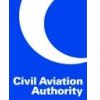
But what are the common causes?
RATES OF AIRPROX per flying hour are difficult to compile and unreliable across the different categories of operation, but the recession
has reduced Commercial Air Transport by some 10 per cent.
There is anecdotal evidence of a reduction in General Aviation activity, and military activity has been affected by the reduction in fast jet aircraft types.
FIGURE 1 shows the breakdown by flight category; ‘Other’ refers to airprox in which one of the aircraft has not been traced.
TURNING TO THE CAUSES, most airprox have more than one cause assigned; for example, a pilot flying over a glider site and coming into conflict with a glider he does not see would be assigned a minimum of ‘did not see’ and ‘flying close/over a glider site’. In addition to the causes which are obviously sighting issues, a ‘conflict’ is often assigned when one pilot A sees aircraft B late and files a report, but pilot B saw aircraft A in good time and avoided. The breakdown of 319 causes for the 161 airprox in 2012 (Figure 3) was typical of every year, with sighting issues accounting for between one third and one half of the total.
The AIRPROX BOARD follows the ICAO convention of risk classification A-E:
FIGURE 4 shows a breakdown of the risks by flight classification. Almost half of GA-GA airprox are assessed to be risk-bearing (Risk A & B) and one third of GA-Mil and Mil-Mil are risk-bearing. These results correlate with the see-and-avoid nature of many GA and Mil flights and the preponderance of non- and latesightings shown earlier.
Source: (UKAB’s magazine 'Airprox')

.jpg)

.png)




